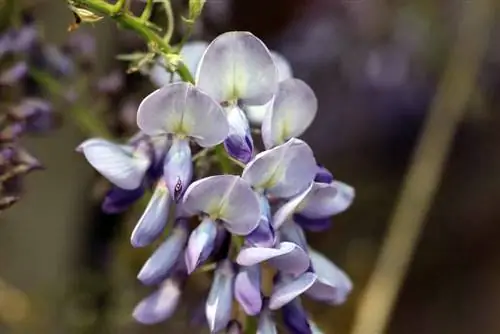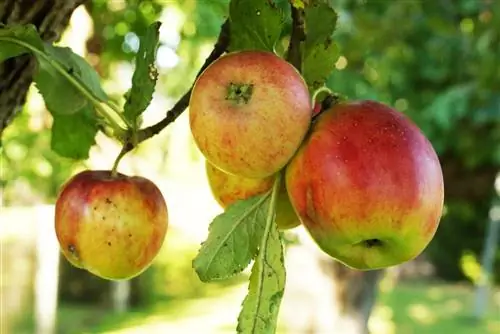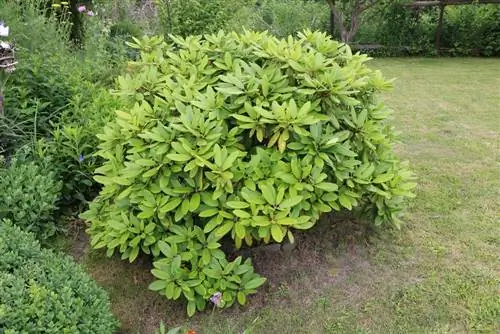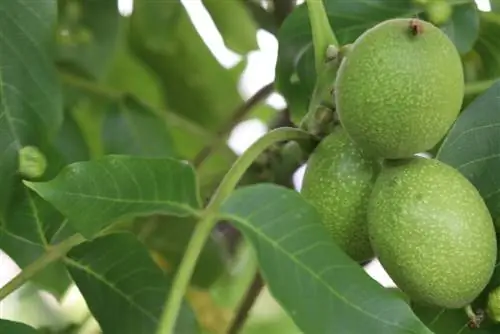- Author admin [email protected].
- Public 2023-12-17 03:39.
- Last modified 2025-01-24 12:45.
This vigorous, evergreen and perennial plant thrives more or less well in different locations and does not require any special care. It is mostly used for greening walls, hedges or as a privacy screen and ground cover. The leaves of ivy are particularly decorative. Depending on the variety, they can be deep green or intensely patterned. The growth rate can also vary within the species and varieties.
Growthiness of ivy
Ivy is widely known for its rapid growth and ability to easily attach to a variety of surfaces. Not only can it climb upwards, but it can also spread over a large area on the ground. If it is not cared for appropriately, especially if it is cut, it can quickly become a massive problem. The growth of this plant is influenced both positively and negatively by the respective site conditions, fertilization and regular pruning measures. But how fast does it actually grow and can you influence it?
Growth in multiple stages
Hedera helix can live up to 500 years, depending on the variety and prevailing conditions. The maximum growth rate per year, under optimal conditions, can be more than 200 cm. You should know that ivy growth takes place in several stages. The first stage, as a young plant, covers the first two years. From the third to the tenth year the plant is in the middle stage. After about ten years, the so-called old age form is reached. The annual increase varies depending on the growth stage.
As a young plant
Young plants mean freshly grown plants, for example from cuttings. As a rule, they are planted out in the garden in spring as soon as they have roots. In the first year they grow very slowly, usually less than half a meter. The rate of growth was also limited in the following two years. The plants are now putting their energy primarily into the formation of new roots and the first tendrils with adhesive roots.
From around the age of three
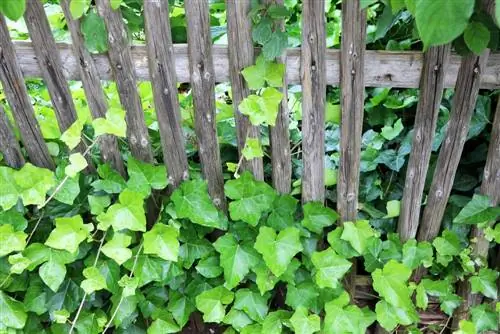
The typically strong growth begins around the third year. As the roots develop, the tendrils with attached roots become stronger. The ivy constantly forms new shoots and tendrils with which it grows up facades or crawls over the ground. He tries to escape the light as much as possible and looks for shady corners. It can gain between five and ten meters in height and width over the next few years, provided it is not cut down.
Age form after ten years
After about ten years, when the ivy has reached its mature form, it no longer spreads via tendrils, but grows like a bush and only upwards. In contrast, young plants only form tendrils with adhesive roots. From this stage onwards, the now stately plant acts like a tree; it reduces growth and thus the speed of growth by around half. Nevertheless, it clearly continues to grow and can now be cut into any shape if necessary.
Tip:
Ivy, which is grown from young shoots, forms tendrils and can be grown as a climbing plant. If, on the other hand, it is propagated in the old form, upright, shrub-like and non-climbing plants develop from the cuttings.
Accelerating growth
There are different factors that can accelerate the growth of ivy:
Location and soil
- Location and soil have a significant influence on growth rate
- Especially in the first few years
- Ivy grows fastest under optimal conditions
- Make sure the site conditions are good
- Locations with high humidity, lots of shade and permeable soil are ideal
- Growth rate here, more than 200 cm per year
- Annual growth is lower in places with a lot of sun and moist soil
- About 150 cm in a year
- There is a risk of sunburn here in winter
- Growth on poor soils, in locations with a lot of sun, low humidity, lowest
- Is significantly less than 100 cm annually
Tip:
In general, you can say that ivy grows faster the shady the place and the more constant the air and soil moisture.
Fertilization
Normally, ivy does not need to be fertilized once it has settled well into a location. However, if you want to accelerate the growth of the plants, fertilization is another possible option.
- Growth acceleration is particularly useful for young plants
- Especially in the first six weeks after planting
- Now additional fertilizer can further stimulate plant growth
- In particular the supply of nitrogen and potassium
- Horn shavings and compost can be used as organic fertilizers
- Commercial liquid or slow-release fertilizers are also suitable
- Best time to apply appropriate fertilizer from mid-March to the end of July
- Apply organic fertilizers such as compost and horn shavings in spring
- Distribute as much as possible between the individual tendrils
Regular pruning

The main purpose of pruning Hedera helix is to curb growth or cut the plant into shape. But after a cut it also grows back particularly quickly. In the first few years, pruning should be conservative or minimal. Only after about three to four years does it noticeably increase in growth and begin to proliferate uncontrollably. Then it's time for simple cutting measures. The best time for this is around July/August. This is the best time to identify potential gaps. The older the ivy is, the faster it grows. This means that older specimens in particular should be cut back again in spring or autumn. Even radical cuts are no problem.
Tip:
The clippings should be completely collected from the ground and, if possible, not disposed of in the compost. Otherwise, the cut shoots can easily regain a foothold and spread elsewhere.
Be aware of the toxicity of ivy
Ivy (Hedera helix) is a poisonous plant. This is due to the toxic toxins falcarinol and triterpene aponine, which are contained in all parts of the plant. Skin contact may cause rashes and allergies in sensitive people. Consuming the leaves and especially the fruits can cause symptoms of poisoning in both children and pets such as cats. The plants only produce the highly poisonous berries when they are older. They ripen in spring and should not be left in the hands of children.


